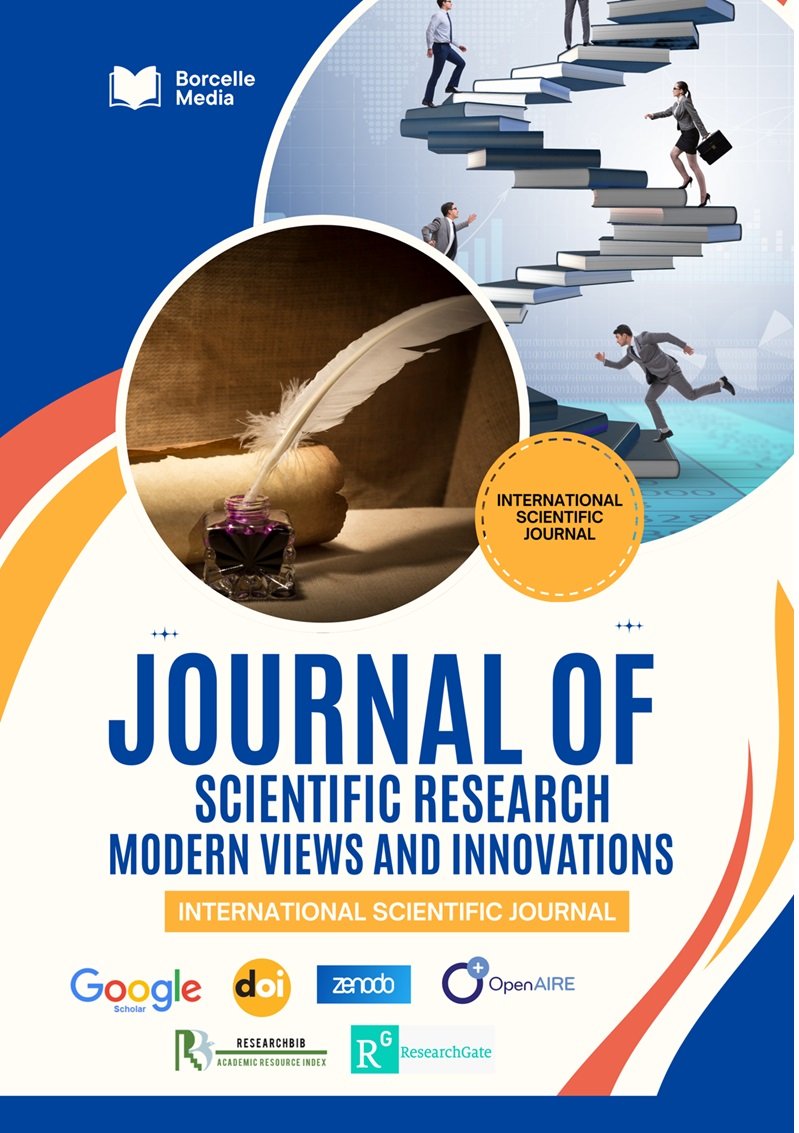HOW AI “LIKE CHAT GPT” IS CHANGING THE WAY PEOPLE WRITE AND LEARN ENGLISH.
Keywords:
Artificial Intelligence, ChatGPT, English language learning, writing skills, language education, technology in education, AI-assisted learning, digitalAbstract
This article explores how Artificial Intelligence (AI), particularly tools like ChatGPT, is transforming the ways people write and learn English. It examines how AI-powered language models assist learners in improving grammar, vocabulary, and fluency, while also enhancing creativity and confidence in writing. The study discusses the advantages of using AI as a personalized tutor, editor, and conversation partner, as well as potential challenges such as overreliance and accuracy issues. By analyzing both educational and technological perspectives, the article highlights how AI is reshaping English language learning and writing practices in academic, professional, and everyday contexts.
References
1. Almusharraf, N. (2024). Assessing the usability of ChatGPT for formal English language learning. Education and Information Technologies, 29(2), 211–234. https://pmc.ncbi.nlm.nih.gov/articles/PMC10528190/
2. Chen, X., & Kulkarni, R. (2024). Artificial intelligence in education: A systematic literature review. Expert Systems with Applications, 246, 123456. https://www.sciencedirect.com/science/article/pii/S0957417424010339
3. Cruz, L., Ramos, A., & Oliveira, M. (2024). AI in higher education: A systematic literature review. Frontiers in Education, 9, Article 1391485. https://www.frontiersin.org/journals/education/articles/10.3389/feduc.2024.1391485/full
4. Farahani, M., & Rahimi, A. (2024). ChatGPT in English language learning: Exploring learner perceptions and experiences. TESL-EJ, 28(1), 1–15. https://tesl-ej.org/wordpress/issues/volume28/ej109/ej109a8/
5. Hanna, R., & Zhu, Y. (2024). The ethics of using AI in K–12 education: A systematic literature review. Technology, Pedagogy and Education, 33(2), 188–204. https://www.tandfonline.com/doi/full/10.1080/1475939X.2024.2428601
6. Baqoyev, Navrozjon (2023). O‘ZBEK TILIDAGI “QO‘L” SO‘ZI VA U QATNASHGAN IBORALAR SEMANTIKASI. Oriental renaissance: Innovative, educational, natural and social sciences, 3 (2), 414-417.
7. Bakoev, N., & Abdumutalova, M. (2023). YAPON TILIDAGI KANSAI SHEVASI VA O‘ZIGA XOSLIGI. Interpretation and researches, 1(17).
8. Bakoev, N., & Yuldasheva, S. (2023). YAPONIYA TA’LIM TIZIMI. Interpretation and researches, 1(17).
9. Bakoev, N., & Ravshanov, S. (2023). YAPON TILIDAGI IYEROGLIFLAR. Educational Research in Universal Sciences, 2(16), 84-87.
10. Bakoev, N., & Sheraliyeva, F. (2023). YAPONIYA TURIZM SOHASI VA RIVOJLANISHI. Interpretation and researches, 1(18).
11. Bakoev , N. (2024). ONE OF MODERN LANGUAGE TEACHING METHODS IS TASK-BASED LANGUAGE TEACHING (TBLT) DISADVANTAGES AND ITS SOLUTIONS. Educational Research in Universal Sciences, 3(4 SPECIAL), 53–57. Retrieved from
12. Шарофиддинов, М. М. (2016). Из истории железной дороги Бухары. Молодой ученый, (9), 962-964.
13. Voxobjonovna, X. S., & Abduraxmonovna, X. D. Formation of Skills of Artistic Creativity in Preschool Children. International Journal on Integrated Education, 3(12), 484-486.
14. Saida, X. (2024, June). HISTORICAL ROOTS OF DEVELOPING STUDENTS'CREATIVE THINKING SKILLS. In International Scientific and Current Research Conferences (pp. 127-128).
15. Xolmatova, S. V. (2024). TALABALARNI KREATIV FIKRLASH KO ‘NIKMALARINI RIVOJLANTIRISHNING PEDAGOGIK JARAYONI. Inter education & global study, (5 (1)), 426-430.
16. Navro‘zjon, B. (2024). Yapon va o ‘zbek adabiyotidagi mifologik obrazlar. Journal of scientific research, modern views and innovations, 1(2), 319-323.





